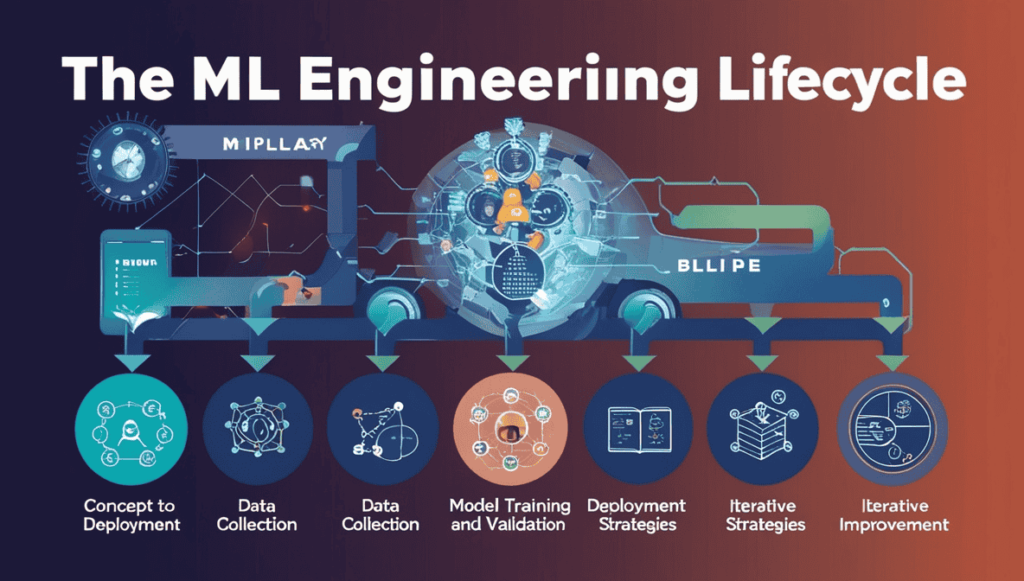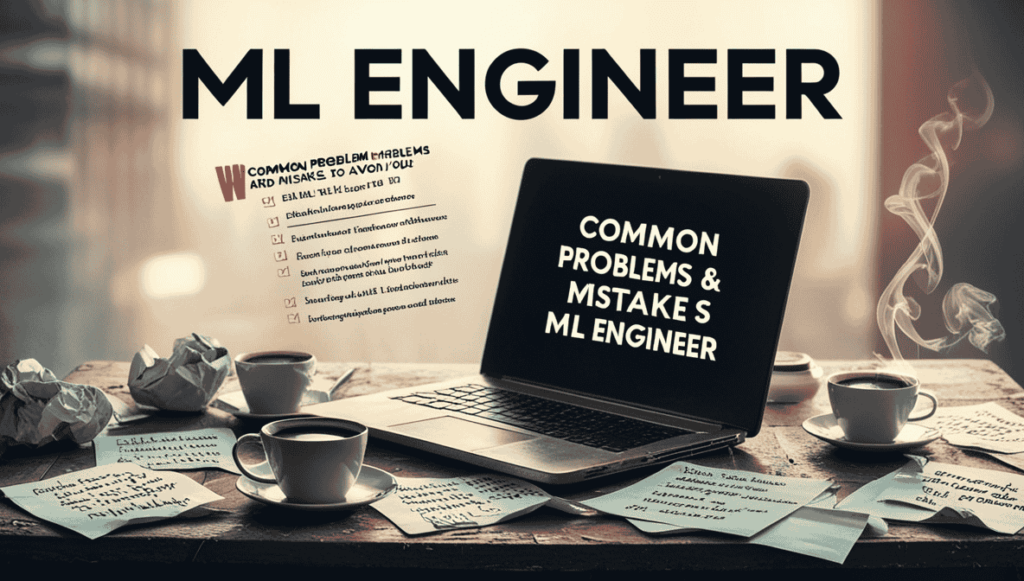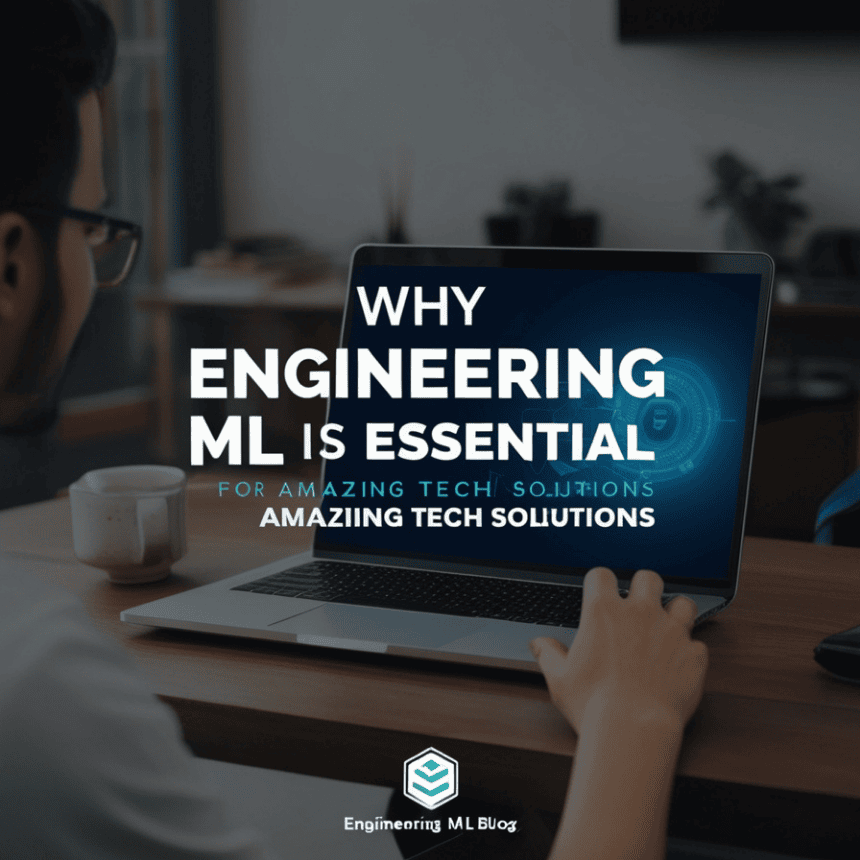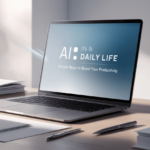Overview
Recent years have seen a surge in Engineering ML adoption, due to companies’ priority on real-time data processing for decision making and operational efficiency. AI and machine learning should be woven into the natural engineering processes to get the optimal optimization of workflows and even automation in their tasks.
Cloud-native solutions like AWS and Azure provide scalable data management infrastructure. DataOps practices enable teams to collaborate, improving data pipelines effectively. The demand for skilled ML engineers is increasing as businesses work with effectively leveraged data-driven insights.
Unlock the Power of Machine Learning
Rapid applications of Engineering ML have reached the industries over the past year, with high rates of innovation and efficiency. More companies use machine learning to enhance informed decision-making and automate their processes. There is an increase in training skilled engineers in ML as organizations demand data-driven insights.
The practices of MLOps are becoming more closely blended with the collaboration of data scientists and engineers. Scalable and efficient cloud platforms like AWS and Azure are also there. Data quality and governance will be as important because the big requirement for businesses is compliance with rules. In short words, Engineering ML is changing how companies work and compete.
Skills that Sets ML Engineers
Good Technical Expertise:
ML engineers are familiar with the programming languages through which successful machine learning models are built, such as Python and R. Engineering algorithms and frameworks like TensorFlow and PyTorch can be run easily by engineers. Being able to pre-process and feature-engineer valuable datasets makes them ready for proper training.
Soft skills:
Cross-functional teams require soft skills such as collaboration and communication to be successful. Critical thinking skills enable the ML engineer to solve complex problems and provide distinctive solutions in real life, directly applicable to real-world application. These skills enhance team work and also lead to better project outcome, so it becomes an integral part of the tech landscape.
The ML Engineering Lifecycle
From idea to design: the ML life cycle model often often comprises steps which are considered while developing products related to machine learning.
Data Collection: Companies have been collecting different types of data during the last 12 months for the significant growth of models and their precisions.
Model Training and Validation: Engineers need to spend hours in training robust data models and then properly validate them so that it does not overfit or bias.

Deployment Strategies: Organizations make use of automated deployment strategies that automatically integrate models into the production environment comparatively faster.
Iterative Improvement: Continuous feedback loops have became an important virtue, and this allows improvement in models based on the performance of reality and user inputs.
Is ML Engineer a Programmer?
They are programmers because ML engineers use programming languages like Python and R considerable enough for developing algorithms and processing data. Good-quality machine learning models would require robust coding skills. They necessarily need to know TensorFlow and PyTorch, too. Technical tasks are significant, mainly when it comes to data preprocessing and feature engineering.
They collaborate with the data scientists and the software engineers to improve the results of projects and innovation. In a nutshell, ML engineers combine aspects of both software development and data science to build intelligent systems that create business value.
Difference between an AI Engineer and an ML Engineer?
| Aspect | AI Engineer | ML Engineer |
| focus | Systems that display human-like intelligence systems | Specialization in algorithmic means by which machines learn from data. |
| Core Responsibilities | Worked on a host of AI applications, including robotics. | It is more about building and optimizing the machine learning model. |
| Skills Required | Experience with algorithms, data processing, and AI techniques | Scripting experience in Python, as well as ML frameworks. |
| Applications | Engages in natural language processing, computer vision, and robotics. | Focuses on predictive analytics and classification tasks. |
| Data Handling | Handles different kinds of data but not primarily data-oriented. | Works with large amounts of data, working on data preprocessing and feature engineering. |
| Collaboration | Often collaborates with hardware engineers and other specialists | Works closely with data scientists to refine model performance. |
| Career Path | Engages with multiple industries, including healthcare, finance, and gaming organizations. | Generally found in technology companies emphasizing data-driven solutions. |
How Engineering Machine Learning Solves Real-World Challenges
In the last year, Engineering ML has addressed various sectors increasingly as real-world challenges. Organizations use AI algorithms to analyze huge data, recognizing patterns that may otherwise go unnoticed to human engineers. For example, AI-based design tools streamline solutions in aerospace by saving tremendous time for custom parts. The ML algorithms anticipate potential design flaws early and cut down the cost of developing a product for the client.
Today, industries tap on predictive maintenance to enhance operational efficiency and reduce downtime. Overall, Engineering ML continues to drive innovation and improve outcomes in diverse applications, proving essential for modern problem-solving.
Common Challenges Tech Companies Experience Without ML Engineering
The lack of ML engineering in any tech companies results in inefficient processing of data and bad decision-making. Manual analysis of data leads to delayed responses and missed opportunity in competitive markets. Lack of automation makes the costs of operations high by wasting the resources. Due to the lack of predictive analytics, businesses fail to penetrate the customers’ needs perfectly. Horrible data quality hinders insights, leading to flawed strategies and outcomes.
Companies then missed innovation, moving a step backward from competition now moving toward machine learning solutions. Generally speaking, without ML engineering, companies are always missing the growth and optimization potential in the emerging data-driven environment.

Avoid Costly Mistakes: Why Cutting Corners in ML Engineering Backfires
Cutting corners in ML engineering last year put companies in the failure lane. Many businesses have poor model performance and wrong predictions because of lack of data preprocessing. Outdated algorithms are seen many models as they don’t have model updates so, wrong outcomes occur many times. Organizations focusing on quality data and good testing have better results and fewer risks associated with ML projects. Some investment has to be made in proper training resources also.
ML Powered Future of Tech: Gear Your Business Up for Tomorrow
Machine learning is going to rewrite all the industries, and the market is estimated to grow from about $26 billion in 2023 to $226 billion by 2030. So if there is an opportunity of using ML for improving the decisions and automation process in businesses, they always move one step ahead of their competitors.
It would be in such a scenario that companies, while exploiting ML, can respond effectively to changes in the environment, become much more efficient, and innovate faster. Investment in ML talent and infrastructure is the need to unlock the full capabilities of a ready future.
Conclusion
The work on Engineering ML has witnessed phenomenal growth over the last year or so. Some of these key trends have shaped up a landscape for companies. Companies are increasingly going for low-code and no-code platforms to make machine learning accessible to non-programmers. The talent shortages in the industry will continually rise with growing demand for qualified ML engineers.
AI hardware will be used to improve performance as well as efficiency, and it is increasing its focus on small language models. The MLOps best practices would emerge as one of the critical ones, needed to smooth workflows and assure the reliability of machine learning. Overall, these developments keep Engineering ML right at the core of innovation for any industry.



